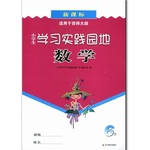题目内容
United States and Canada are multicultural countries with many national, religious and cultural differences, where people attach great importance to individualism—the uniqueness among people. Teachers value the qualities that make each student special and different. You can see such values through their educational systems. For example, students needn’t memorize lots of information. Instead, they work independently and find answers on their own. There are discussions for children to show their own ideas and opinions.
By contrast, people have the same language, history, and culture in most Asian societies. As a result, Asia’s educational system reflects society’s belief in group goals and purposes rather than individualism. Children in China, Japan, and Korea learn to work together and help one another in assignments. And the teaching methods are often very formal and serious. In class, teachers give lectures while students listen and take notes. Discussion is replaced by reciting rules of information that have been memorized.
These two systems both have advantages and disadvantages. One advantage in Japan is that there is much more math and science than American students learn by the end of high school. In addition, students study more hours each day and more days each year than North Americans do. The difficult system also prepares students for a society that place emphasis on discipline and self-control. However, while memorization is an important learning method in Japanese schools, yet many students admit forgetting much of the information that they have memorized after exams.
On the other hand, the educational system in North American has an advantage that students learn to think for themselves, which prepares them for a society that values creativity. The disadvantage is that when they graduate from high school, they haven’t recited as many basic rules and facts as students in other countries have.
- 1.
People in multicultural countries such as the US or Canada lay more stress on __________.
- A.team work
- B.self-control
- C.discipline
- D.individualism
- A.
- 2.
What is the advantage of the educational system in North America?
- A.There is not much discussion.
- B.Learning to think for themselves
- C.Learning much less math and science
- D.They haven’t memorized basic rules and facts.
- A.
- 3.
Which words is most suitable to describe the author's attitude in writing this passage?
- A.Supportive
- B.Opposite
- C.Objective
- D.Subjective
- A.
- 4.
The main idea of this passage is___________.
- A.cultural differences in countries such as the United States or Canada
- B.comparisons of educational system between North America and Asia
- C.there are more advantages of Asian education system of than that of North American
- D.there are more disadvantages of Asian education system than that of North American
- A.
DBDB
文章比较了北美和亚洲两种教育系统的差别
1.细节题。根据第一段2,3行where people attach great importance to individualism可知D正确。
2.细节题。根据最后一段1,2行the educational system in North American has an advantage that students learn to think for themselves,可知B是优点。
3.作者只是客观的论述了两种教育系统的差别,没有表达自己主观的意见。故D正确。
4.主旨大意题。文章比较了北美和亚洲两种教育系统的差别。
文章比较了北美和亚洲两种教育系统的差别
1.细节题。根据第一段2,3行where people attach great importance to individualism可知D正确。
2.细节题。根据最后一段1,2行the educational system in North American has an advantage that students learn to think for themselves,可知B是优点。
3.作者只是客观的论述了两种教育系统的差别,没有表达自己主观的意见。故D正确。
4.主旨大意题。文章比较了北美和亚洲两种教育系统的差别。

练习册系列答案
 学习实践园地系列答案
学习实践园地系列答案
相关题目